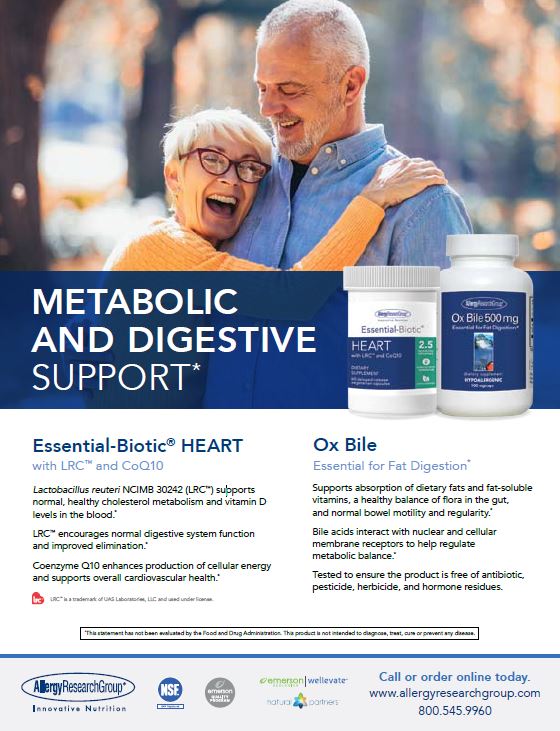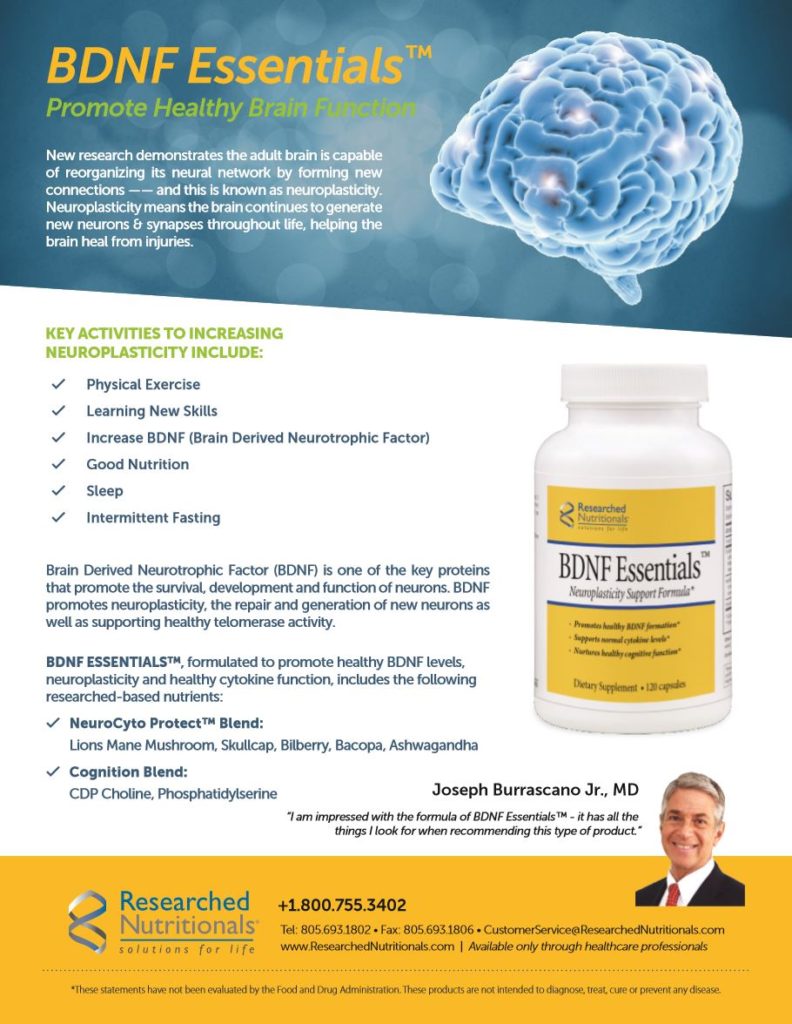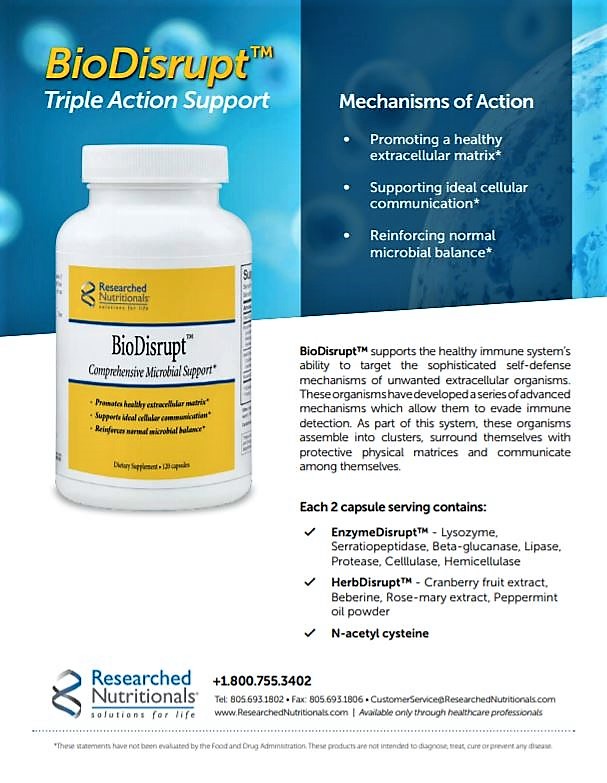Tori Hudson, ND
This article is intended to offer a few of my best sample treatment plans for some select women’s health issues. It is assumed that we treat the individual patient; but with diagnosed medical conditions, we have the advantage of using long-standing historical therapies, reliable empirical medicine, and modern evidence-based therapies for condition specific issues with some expectation of reproducible results. We can then individualize our overall treatment approach based on the multitude of considerations for each patient. I offer these core sample treatment plans that can be considered an optimistic option for all of these selected conditions. Individuals with multiple health care problems and important individual subjective and objective findings can then be addressed with the insight and experience of each practitioner.
Acute Primary Dysmenorrhea
Key concepts
- Primary dysmenorrhea should be distinguished from secondary dysmenorrhea.
- Typical menstrual cramps are due to primary dysmenorrhea.
- Secondary causes of dysmenorrhea and pelvic cramping include endometriosis, adenomyosis, pelvic inflammatory disease, adhesions, ovarian cysts, celiac disease, thyroid conditions, congenital malformations, narrowing of the cervical opening, polyps, or uterine fibroids.
- Provide adequate acute pain relief in addition to trying to correct the underlying mechanism that is causing the problem.
Featured Supplement: Ginger
A long history of historical use, mechanisms of action, and two published studies provide the backbone of rationale for the use of ginger as a single agent for the relief of acute primary dysmenorrhea. One study compared mefenamic acid vs ibuprofen vs ginger (250 mg qid).1 The severity of dysmenorrhea decreased in all groups, and no differences were found between the groups in pain severity, pain relief, or patient satisfaction. More women in the ginger group became completely pain free vs the mefenamic acid and ibuprofen groups. The rate of satisfaction from the treatments was 20/50 women in the mefenamic acid group, 22/50 women in the ibuprofen group, and 21/50 women in the ginger group.
An alternative approach to menstrual cramps needs to provide
effective pain relief while at the same time correcting the underlying dysfunction that is creating the cyclic menstrual pain.
The second study compared two different doses of ginger vs placebo.2 Ginger capsules were given in one of two methods: 1) 500 mg ginger capsules or placebo 3x/daily starting two days before the beginning of menses and continued through day 3 of menses. 2) 500 mg ginger capsules or placebo 3x/daily on days 1, 2, and 3 of menses. The severity of pain was significantly reduced in the ginger group compared to the placebo group for both dosing methods with better results in the first dosing method. The second ginger dosing regimen was not significantly different than placebo in duration of pain.
Sample Acute Plan
- Ginger root powder, 250 mg qid starting two days before the beginning of menses and continued through day 3 of menses.
- Consider combination products containing niacin, borage, vitamin E, calcium, crampbark, valerian, black cohosh and more (3 caps every 3 hours during acute pain).
Conventional Acute Options (one of the following)
- Ibuprofen, 600 mg every 6-8 hours
- Naproxen, 500 mg every 12 hours
- Mefenamic acid, 250 mg tablets; two tablets at onset of pain followed by one tablet every 8 hours
- Naproxen sodium (Aleve), two tablets every 6 hours
Sample Treatment Plan- Prophylaxis
The cause of primary dysmenorrhea may be attributed to one of several factors, including behavioral and psychological ones, lack of blood flow and therefore oxygen to the uterus (ischemia), and increased production and release of uterine prostaglandins. Increased prostaglandins, specifically called PGF2alpha and PGE2, cause uterine contractions that lead to ischemia and pain. The levels of both PGF2alpha and PGE2 are low during the first half of the cycle and early part of the second half, but then they rise sharply and reach their highest levels shortly before and during the onset of menses. This increase in prostaglandin production may be related to the decline in progesterone levels towards the end of the cycle just before the onset of menses. These mechanisms are then the basis for many of the therapies used, both natural and conventional.
An alternative approach to menstrual cramps needs to provide effective pain relief while at the same time correcting the underlying dysfunction that is creating the cyclic menstrual pain. Because we are dealing with a functional problem and not a disease state that is causing the pain, we can truly focus on a holistic approach by looking for aggravating factors in the diet, lifestyle, and emotional environment.
- Diet changes: reduce saturated fats and trans fats; decrease sugar/white flour products.
- Regular exercise.
- Omega 3 oils: approximately 1080 mg/day of EPA with approximately 720 mg DHA daily.
- Ginger capsules, 250-500 mg daily.
Consider (one of the following): cyclic progesterone (100 mg-200 mg h.s. days 15-26); birth control pills; Progestin IUD.
Premenstrual Syndrome/Premenstrual Dysphoric Disorder
Premenstrual syndrome (PMS) refers to the cyclic constellation of troublesome symptoms that appear during the luteal phase of the menstrual cycle—more so in the late luteal phase—disappear by the end of the full flow of menses, and do not appear during the follicular phase. Premenstrual dysphoric disorder (PMDD) is a severe form of PMS that interferes with life activity. Although some 150 symptoms have been listed as premenstrual, the most common symptoms include irritability, anger, food cravings, depression, anxiety, mastalgia, headaches, tension, fatigue bloating, and water retention.
Key Concepts
- Understanding the days of the month symptoms occur is key in diagnosing PMS/PMDD accurately.
- Investigate not only the severity of symptoms, but the duration, as well as which symptoms are dominant and significantly affect quality of life.
- Normal ovarian function, and not a true hormonal imbalance, triggers the central nervous system and predisposes a woman to hormone-induced instability, and thus the PMS/PMDD symptoms. We do not currently know why the extent of sensitivity to the ovarian steroid-induced neurotransmitter changes varies in different women. Of the neurotransmitters studied, serotonin is the principal one implicated in the pathogenesis of PMS and PMDD.Whether PMS and PMDD are related to absolute levels or reduced blood levels of serotonin or to serotonin transport remains unclear. Other neurotransmitter systems may also be involved in PMS and PMDD. They include the adrenergic, opioid, and gamma-aminobutyric acid (GABA) systems.
- Testing saliva, serum, or urinary hormone levels are not diagnostic of PMS nor indicative in providing treatment directions.
Select Diet, Supplement/Botanical Research
Declining levels of serotonin, and also of dopamine, have been implicated in the etiology of PMS. Vitamin B6 (pyridoxine) is thought to be unique in its ability to increase the cerebral synthesis of several neurotransmitters, including serotonin and dopamine, and more than a dozen studies have been done using vitamin B6 for PMS. These studies used vitamin B6 at a dose of 50 to 500 mg/day. Some of them found no effect, but others reported a substantial and broad effect. An overview of these studies has been published in the British Journal of Obstetrics and Gynaecology.3
A prospective, open, uncontrolled, observational pilot study using St. John’s wort standardized extract, 300 mg three times daily, was investigated in order to establish a hypothesis and to test methods for a future randomized controlled trial.4 Nineteen women with PMS underwent a preliminary screening interview and completed a daily symptom rating for one cycle. After taking the St. John’s wort for two complete menstrual cycles, daily symptoms were rated using the Hospital Anxiety and Depression scale and a modified Social Adjustment Scale. The degree of improvement in overall premenstrual syndrome scores between baseline and the end of the trial was 51% with over two-thirds of the population demonstrating at least a 50% decrease in symptom severity. The mood subscale showed the most improvement (57%) and the symptoms with the greatest reductions in scores were crying (92%), depression (85%), confusion (75%), feeling out of control (72%), nervous tension (71%), anxiety (69%) and insomnia (69%).
Chaste tree berry, aka Vitex agnus-castus, is well published in terms of cyclic menstrual related symptoms. In a systematic review and meta-analysis, ten databases were searched and updated as of January 2016.5 Included studies were randomized controlled trials that used a preparation of chaste tree although not all studies used the same dose or preparation; and the herbal group was compared to either a placebo or pharmacological or other natural agent for a minimum of two menstrual cycles. No studies of homeopathic preparations of chaste tree were included.
In the final search and analysis, seventeen randomized controlled trials were included in the qualitative analysis and 14 of those were also included in the quantitative analysis; there was insufficient data for the other three. Ten studies were placebo controlled and nine were other agent controlled, including SSRI, fluoxetine, an oral contraceptive, vitamin B6, magnesium, St. John’s wort, or vitamin E. Two of the trials compared chaste tree to both an oral contraceptive and a placebo.
In 10 of the studies that used a placebo control, chaste tree was found to be superior in nine of them. These nine used an extract and the one negative study used ground berries. Chaste tree was superior for relieving PMS symptoms in all the studies comparing it to any of the other natural agents. Chaste tree was comparable to oral contraceptives in the studies where this was compared. Chaste tree was comparable to fluoxetine in one study; but in another, some components of the Hamilton depression rating scale scored higher for fluoxetine. Fewer side effects occurred in the women on chaste tree vs fluoxetine or the oral contraceptives.
Sample Treatment Plan
- Diet changes: low in sugar, starchy carbs
- Aerobic exercise (walking or other, a minimum of 30 minutes, 5 times weekly)
- Combination product that includes all or most of the following: B6, calcium, chromium, kelp, chaste tree, St. John’s wort, ginkgo, borage seed oil extract, vitamin E, magnesium, passion flower, or chamomile, dong quai, wild yam, dandelion leaf (2 capsules twice daily throughout whole cycle).
- If not a combination product, then consider B6 (50-100 mg/day), calcium (1,000 mg/day), St John’s wort (300 mg three times daily), Vitex extract (1 capsule per day – especially if cyclic mastalgia is part of the picture).
- If PMDD, add on chamomile for irritability; SAMe 200-400 mg/day for depression.
Acute Bacterial Vaginosis
Bacterial vaginosis (BV) consists of a significant polymicrobial overgrowth in which the bacteria act synergistically to cause an odor and discharge and may lead to potential complications in the uterus and fallopian tubes. It is best to consider BV to be the result of alterations in the vaginal ecosystem, rather than an infection caused by any single microorganism. In BV, the environment of the vagina shifts from a predominance of lactobacilli to a predominance of anaerobes (mainly Prevotella, Peptostreptococcus species, Eubacterium species, and Mobiluncus) and facultative bacteria (Mycoplasma species, Staphylococcus epidermidis, Streptococcus species and Gardnerella vaginalis). This overgrowth results in the degradation of the mucus membrane and shedding of the vaginal epithelium, resulting in a discharge. The destruction of these mucins exposes the epithelium to other organisms, with the subsequent appearance of clue cells.
Key Concepts
The best treatment for BV is one that will lead to resolution of symptoms and offers the most likelihood for restoring the lactobacilli ecosystem.
The goal of treatment is to restore the vaginal pH to <4.5 and to re-establish normal ecology by having dominance of Lactobacillus species.
- Remove/limit obstacles to cure
- Improve vaginal immunity
- Support systemic immunity
- Restore pH
- Restore vaginal microenvironment
- Restore gut ecology
- Provide symptom relief
- Correct co-medical conditions
Featured Ingredient: Lactobacillus rhamnosus/reuteri
A randomized double-blind placebo-controlled trial of 100 women (mean age 34 years) with BV were treated with 2% vaginal clindamycin cream for 7 days and then randomized to receive vaginal capsules for 10 days containing either a placebo or a combination of L. gasseri and L. rhamnosus (10 bn CFU/capsule) for three menstrual cycles.6 Probiotics did not improve efficacy of BV treatment during the first month of treatment. However, women initially “cured” were followed for six menstrual cycles or until relapse within that time. At the end of six months, 64.9% of the probiotic-treated group were still BV-free and compared to 46.2% in the placebo group.
Sample Acute BV Treatment Plan
- Vaginal vitamin C tablet (250 mg) for six days, then
- Boric acid (600 mg suppository 1/day for 10 days, then once weekly for 6 weeks to prevent relapse/recurrence).
- Lactobacillus rhamnosus/rheuteri in suppository (or capsule inserted in vagina); once weekly for 6 weeks, during the same weeks as the boric acid.
- Lactobacillus species (eg, Lactobacillus rhamnosus with Lactobacillus rheuteri) combinations, 1-10 billion per day for four months.
Sample Chronic or Chronic Recurring BV Treatment Plan
- Low glycemic index diet
- Vitamin D (4,000 i.u. daily)
- Avoid vaginal exposure to semen (to facilitate vaginal pH becoming acidic) and optimal to avoid oral sex for six months (to avoid mixing oral flora with vulvo-vaginal flora).
- Insert vaginal specific vitamin C suppository nightly for six nights
- Then follow with boric acid (600 mg compounded suppositories or capsules nightly for 1 week then 2x/weekly for 3-6 months).
- Oral L. rhamnosis/L. rheuteri (1-10 billion daily for 4-6 months)
- Vaginal L. rhamnosus/L. rheuteri capsules once weekly for 3-6 months
Consider vaginal metronidazole once weekly for 4 months. Add vaginal estrogen in peri or postmenopausal woman twice weekly. Also, consider biofilm disruptors.
Conventional Acute Treatment Options
- Metronidazole 250 mg 3x/day orally for 7 days or
- Metronidazole 2 g as a single oral dose or
- Metronidazole gel 0.75% (MetroGel-Vaginal, 3M) intravaginally once a day for 5 days or
- Clindamycin 2% intravaginally once a day for 7 days; or clindamycin ovules insert once daily for 3 days.
References
1. Ozgoli G, Goll M, Moattar F. Comparison of effects of ginger, mefenamic acid, and ibuprofen on pain in women with primary dysmenorrhea. J Alternative and Complementary Med. 2009;15(2):129-132.
2. Rahnama P, et al. Effect of Zingiber officinale R. rhizomes (ginger) on pain relief in primary dysmenorrhea: a placebo randomized trial. BMC Complement Altern Med. July 10, 2012;12(1):92.
3. Kleijnen J, ter Riet G, Knipschild P. Vitamin B6 in the treatment of the premenstrual syndrome – review. Br J Obstet Gynaec. 1990;97:847-852.
4. Stevinson C, Ernst E. A pilot study of Hypericum perforatum for the treatment of premenstrual syndrome. British J Obstetrics and Gynaecology. 2000;107: 870-876.
5. Verkaik S, et al. The treatment of premenstrual syndrome with preparations of Vitex agnus-castus: a systematic review and meta-analysis. Am J Obstet Gynecol. August 2017;217(2):150-166.
6. Larsson P-G, et al. Human lactobacilli as supplementation of clindamycin to patients with bacterial vaginosis reduce the recurrence rate; a 6-month, double-blind, randomized, placebo-controlled study. BMC Women’s Health. 2008;8:3.
Tori Hudson, ND, graduated from the National College of Naturopathic Medicine (NCNM), now National University of Natural Medicine (NUNM), in 1984 and has served the college in several capacities. She is currently a clinical professor at NUNM, Southwest College of Naturopathic Medicine, and Bastyr University. Dr Hudson has been in practice for more than 34 years, is the medical director of her clinic, A Woman’s Time (Portland, Oregon), is co-owner and director of product research and education for VITANICA, and is the program director for the Institute of Women’s Health and Integrative Medicine. She is also the founder and co-director of NERC (Naturopathic Education and Research Consortium), a non-profit organization for accredited naturopathic residencies.
Dr. Hudson has received numerous awards, including the 1990 President’s Award from the American Association of Naturopathic Physicians, the 1999 prestigious Naturopathic Physician of the Year Award, the 2009 Natural Products Association NW Pioneer Award, and in 2012 was inducted into the NUNM Hall of Fame.
She is a nationally recognized author, speaker, educator, researcher, and clinician. Dr. Hudson serves on several editorial boards, advisory panels and as a consultant to the natural products industry.
www.drtorihudson.com
www.instituteofwomenshealth.com









